An In-Depth Exploration of Marvel Legends Rhino
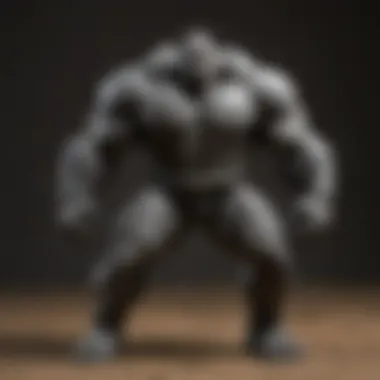
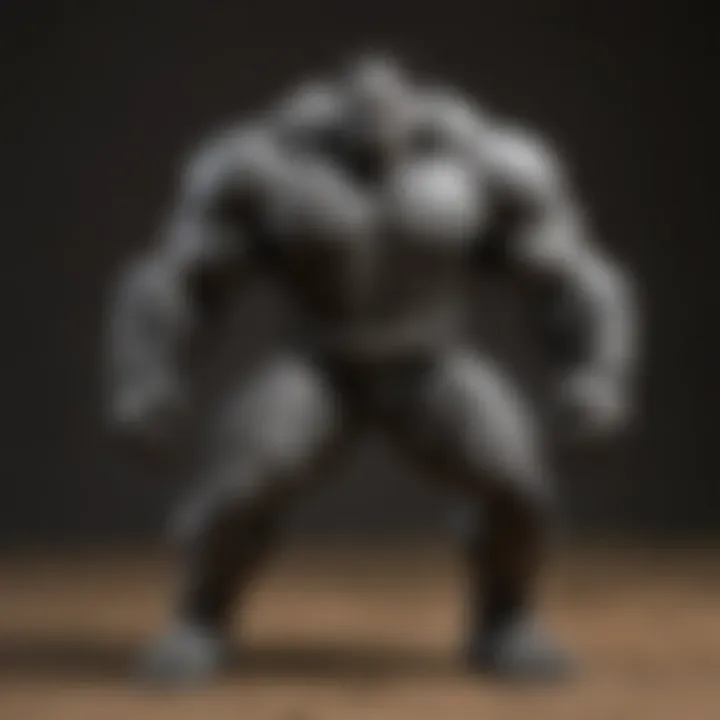
Intro
The character of Rhino, known for his brute strength and imposing presence, holds a vital place in the realm of Spider-Man lore. Since his first appearance in The Amazing Spider-Man #41, Rhino has evolved from mere muscle to a complex character in the spider-verse. This exploration aims to delve deep into who Rhino is, his importance in the Marvel Legends line, and how he reflects broader themes of power and identity in comic narratives.
Spider-Man Character Analysis
Background
To understand Rhino, it is essential to contextualize the world of Spider-Man. The character of Spider-Man, created by Stan Lee and Steve Ditko, debuted in Amazing Fantasy #15 in 1962. Spider-Man, or Peter Parker, is a young man who gains superpowers through a radioactive spider bite. This origin mixes wit, science, and the struggles of adolescence, resonating with readers of all ages. The evolution of Spider-Man has seen him navigate personal challenges and moral dilemmas, solidifying him as a relatable superhero.
Rhino's Origin
Rhino, or Aleksei Sytsevich, was introduced as a formidable foe. Initially a petty criminal, he undergoes an experimental procedure that enhances his strength and durability, granting him a rhinoceros-like suit. This transformation is not only physical but symbolizes his struggle for acceptance and power. The tragic backstory is often shadowed by his aggressive persona. Understanding Rhino's motivations provides insight into his character beyond his villainous role.
Powers and Abilities
Rhino possesses immense physical power, which is his defining trait. In addition to superhuman strength, his armored exterior makes him nearly impervious to damage. This power is both a blessing and a curse; while it allows him to fight powerful adversaries, it also confines him within the role of a mere brute, limiting his development.
"Rhino exemplifies the struggle between power and identity, showcasing how strength can at times overshadow one's humanity."
Character Development
Character development for Rhino is nuanced. Though primarily seen as a villain, several storylines portray him in a sympathetic light. His conflicts with Spider-Man often highlight the complexity of his motivations. Comic arcs featuring Rhino reveal moments that humanize him, allowing readers to empathize with his struggles. Moments of vulnerability often create a bridge between the reader and the character, suggesting that even villains have their challenges.
Latest Spider-Man News Update
Comic Books
In recent comic releases, Rhino has appeared alongside Spider-Man in Spidey and The Amazing Spider-Man. These issues dive into his role as a formidable yet misunderstood character. New storylines explore his struggles with power and redemption.
Movies
Rumors surround upcoming Spider-Man movies. While there is no official confirmation regarding Rhino's appearance, the potential for new adaptations fuels anticipation among fans. The film universe continues to evolve, incorporating various characters from the Spider-Man universe.
Video Games
In video games like Marvel's Spider-Man: Miles Morales, Rhino remains a significant adversary. Updates frequently highlight his role in DLCs and gameplay enhancements, showcasing his impact in interactive narratives. Fans can enjoy experiencing battles against his overwhelming force in vibrant environments.
Top Villains in Spider-Man Universe
Main Antagonists
Rhino is one of several iconic villains within the Spider-Man universe. Other notable characters include Green Goblin, Doctor Octopus, and Venom, each bringing unique dynamics to Spider-Man’s world. These antagonists enrich the story, providing various challenges for the hero.
Origins and Motivations
The origins of Spider-Man's villains often mirror the complexity of their encounters with him. Variety in backgrounds, from personal tragedies to misguided ideals, underscores their motivations. This makes the conflict between Spider-Man and his foes not just physical but philosophical as well.
Memorable Battles
Over the years, the battles between Spider-Man and Rhino have captivated audiences. Fights highlight not only physical confrontations but emotional stakes. Each encounter delves into their complex relationship, showcasing mutual respect amid conflict, an aspect that elevates the narrative.
The End
Rhino is a multifaceted character whose journey is reflective of broader themes in comics. From his origins to his struggles within the superhero realm, he represents a rich narrative waiting to be explored. The analysis of this character within the Marvel Legends series deepens the understanding of what it means to be a superhero's adversary, offering captivating insights that resonate in popular culture.
This exploration ultimately emphasizes how characters like Rhino, while often portrayed as mere antagonists, challenge readers to reflect on the value of power, righteousness, and identity in their own lives.
Prolusion to Rhino
The introduction of Rhino in this article serves as the foundational pillar for understanding the intricate layers surrounding this character in the Marvel Universe. The significance of Rhino extends beyond mere antagonism; he embodies the evolution of villainy and its narrative roles within comic lore. This section aims to lay out the groundwork, detailing why Rhino is not just another disposable villain but a figure of complexity in the Spider-Man saga.
By investigating Rhino’s character, we gain insight into the broader themes within Spider-Man’s world. The representation of villains reflects societal concerns, shifting moralities, and the nuances of redemption. Furthermore, the exploration of this character enhances appreciation for superhero narratives, inviting readers to reflect on their social implications.
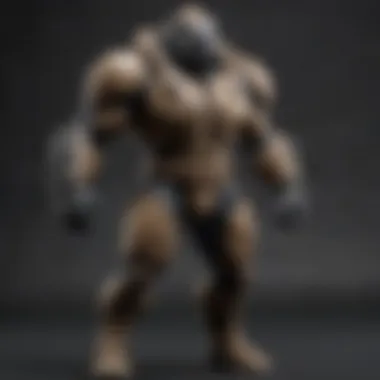
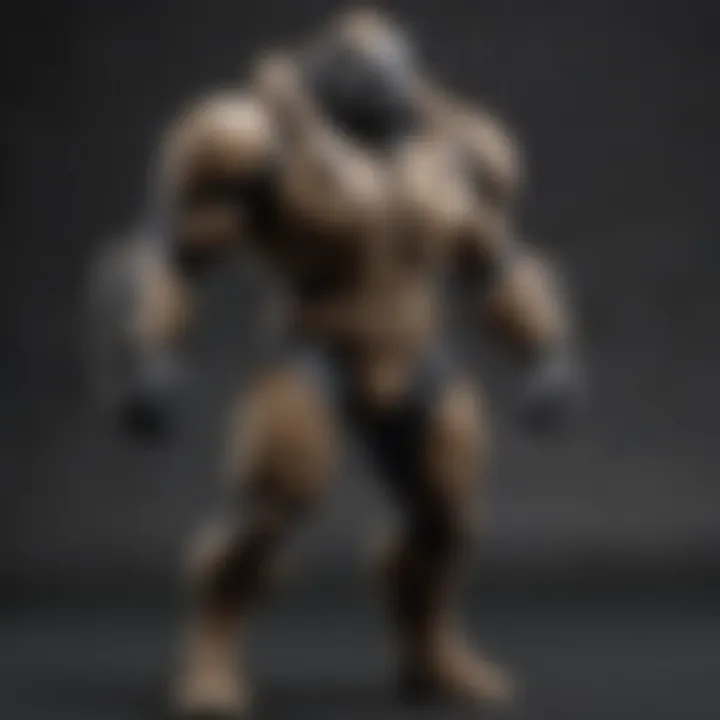
Character Overview
Rhino, originally known as Alex O'Hirn, first appeared in The Amazing Spider-Man #41 in 1966. Created by writer Stan Lee and artist John Romita Sr., Rhino stands out due to his daunting physique and distinctive costume. The character is most noted for his superhuman strength and durability, which allows him to engage Spider-Man on an even battlefield. His armor, resembling that of a rhinoceros, not only serves as a functional element of his combat but also acts as a symbol of his relentless aggression.
While Rhino is often perceived as a brute, his complexity cannot be overlooked. He wrestles with his identity, torn between being a mere henchman and seeking autonomy. This duality provides depth, revealing how villains can embody tragedy and strength simultaneously.
Origins in Comics
The origins of Rhino within Marvel Comics are deeply rooted in a narrative of manipulation and transformation. Initially, Alex O'Hirn was a small-time criminal seeking power. He underwent a procedure designed to enhance his physical attributes, resulting in his significant bulk and incredible capabilities. The transformation into Rhino highlights the themes of exploitation and the cost of power.
His early encounters with Spider-Man established a pattern of conflict that underscored not only Spider-Man’s heroism but also Rhino’s tragic circumstance. Importantly, Rhino is created through a blend of science and human ambition, paralleling the aspirations and failures often depicted in superhero narratives.
Furthermore, Rhino's motivations are seldom purely evil. Often, he enters the fray as a product of his environment and the nefarious influences surrounding him. This ties into larger themes within comic book storytelling, where understanding a villain’s backstory can foster a more profound appreciation for the narratives' moral complexities.
Understanding the origins of Rhino broadens the reader’s understanding of villainy, moving beyond one-dimensional portrayals to more nuanced representations.
Rhino’s Role in the Spider-Man Universe
Rhino serves as one of the pivotal characters within the Spider-Man universe, embodying the struggle between hero and villain. His monstrous strength and relentless nature make him a formidable foe for Spider-Man. At its core, Rhino’s role extends beyond mere antagonism; it illustrates themes of power, manipulation, and the effects of one's choices. His association with organized crime and conflict with Spider-Man signifies the broader battle between good and evil that is foundational to many comic book narratives.
Primary Antagonist
Rhino, whose real name is Aleksei Sytsevich, first appeared in The Amazing Spider-Man #41 in 1966. Since then, he has consistently occupied the role of a primary antagonist. His character is often depicted as a brute force—emphasizing raw power over intellect. This instills a certain unpredictability in the narrative.
Rhino is frequently utilized by villains, such as the Kingpin, to serve as muscle in various schemes against Spider-Man. This dynamic exemplifies themes of dependence and exploitation, as he often carries out the bidding of others while wrestling with his own agency. His relentless pursuit of Spider-Man enhances the tension in their encounters, reinforcing the hero’s resilience and resourcefulness.
Relationships with Other Characters
Rhino’s interactions extend beyond his rivalry with Spider-Man. He often collaborates with other villains, forming alliances that add depth to his character. Notable figures with whom he shares relationships include the Vulture, Mysterio, and Doctor Octopus.
These alliances often showcase his struggles with identity. For example, while Rhino exhibits loyalty to his villainous counterparts, moments reveal his desire for approval and acceptance. Similarly, he has complex relationships with more sympathetic characters, such as the Black Widow, creating a contrasting perspective on his brutal persona.
Rhino’s strained relationship with Spider-Man also adds layers to the narrative. The hero often shows empathy towards him, understanding the manipulation behind his monstrous form. This moral ambiguity creates a space for discussions about redemption and the capacity for change.
"Rhino is more than just a villain. He represents the complexities of choice, loyalty, and identity in the face of adversities."
In summary, Rhino's role in the Spider-Man universe demonstrates the intricate fabric of hero-villain dynamics and their implications in broader themes, which resonate with audiences across generations.
The Evolution of Rhino’s Character
The evolution of Rhino's character is a significant aspect of his overall narrative. Initially introduced as a straightforward villain, Rhino has undergone various transformations that reflect broader changes in comic book storytelling. Through these changes, audiences can appreciate the depth of his character, which goes beyond mere brute force. This section will explore how Rhino transitioned from his early days to modern interpretations. Such an exploration reveals the enduring relevance of his character in both the Spider-Man universe and beyond.
Early Appearances
Rhino made his first appearance in "The Amazing Spider-Man" #41, which was released in 1966. Created by writer Stan Lee and artist John Romita Sr., he was originally depicted as a formidable foe for Spider-Man. The character's design features a thick gray suit that enhances his physical strength and grants him a rhinoceros-like appearance.
In these early editions, Rhino functioned primarily as an unthinking powerhouse. His motivations often stemmed from being a hired muscle for other villains like The Kingpin. This portrayal emphasized a lack of depth, focusing mainly on his physicality and strength rather than his backstory or emotions. Readers saw him as a threat, but not much more.
These early portrayals established a foundation for later interpretations, where writers began to explore his past. Understanding Rhino’s origin as a bullied man transformed by science into a hulking figure presents a more complex narrative. His motivations and flaws started to come into view, allowing fans to see him as more than a mindless thug.
Modern Interpretations
In recent years, the portrayal of Rhino has shifted significantly. Writers have delved deeper into his character, creating more nuanced stories that address his struggles and inner conflicts. One significant development is in the "Superior Spider-Man" storyline, where Rhino becomes a character of sympathy.
In these modern stories, he often grapples with his identity. Elephant Man is a perfect parallel—while Rhino physically embodies power, he also longs for acceptance. This duality resonates with fans, providing a richer understanding of his character.
Furthermore, the incorporation of themes such as redemption allows for a broader appeal. Rhino's character has sometimes been placed in situations where he questions his choices and their consequences. This approach helps to engage a more mature audience, giving depth to his character that was absent in early appearances.
Overall, the evolution of Rhino from a simple villain to a complex character reflects broader trends in comic book narratives. This transformation not only enriches his backstory but also revitalizes his role within the Spider-Man universe.
Rhino’s Portrayal in Media
Rhino’s depiction across various media platforms highlights the character’s significance within the broader Marvel universe. Media portrayals bring life to comic characters, enabling a diverse audience to engage with their stories beyond printed pages. In the case of Rhino, his transitions from comics to animated series and live-action films have allowed for an examination of his character depth and thematic relevance.
Animated Series
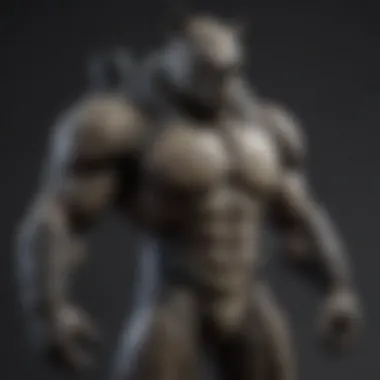
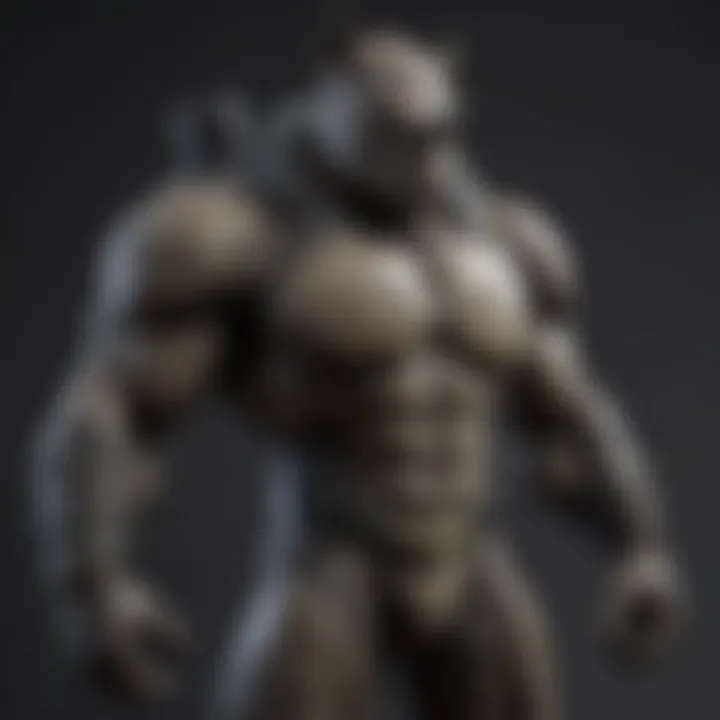
Rhino has appeared in numerous animated adaptations of the Spider-Man franchise. Shows like Spider-Man: The Animated Series (1994) showcased him as a fierce, physically imposing villain. In these series, Rhino is often portrayed as a brute force, emphasizing his immense strength and near invulnerability. Animated character designs usually feature exaggerated features, enhancing his intimidating presence.
He was featured alongside other iconic villains, creating a dynamic that reflects a range of personalities. This interaction presents him as more than just a mindless thug. In these adaptations, he displayed moments of reluctance and emotional depth, allowing viewers to understand his motivations. Such portrayals contributed to his narrative complexity rather than reducing him to a standard antagonist.
Furthermore, newer animated series have reimagined Rhino, even integrating humor elements that contrast with the traditional portrayal of his character. This change often leads to a mixed reception, showcasing how reimaginings can challenge or reinforce audience perceptions of character integrity.
Live-Action Film Appearances
Rhino's presence in live-action films has played a crucial role in shaping modern interpretations. The character made a significant appearance in The Amazing Spider-Man 2 (2014), portrayed by Paul Giamatti. This version emphasized a more chaotic and reckless dimension of Rhino, diverging from earlier portrayals in animation.
While the film itself received mixed reviews, Rhino's integration into the cinematic universe introduced him to a new generation. Additionally, Giamatti's portrayal brought an unpredictable energy that resonated with some fans, even if it differed from the traditional blockbuster villain archetype. The character’s armor also represented a fresh take, adding a mechanical twist to his already formidable nature.
It's important to note that the Marvel Cinematic Universe has yet to explore Rhino in depth, leading to speculation and anticipation among fans. Will Rhino get a more nuanced portrayal in future films? This question remains open, underscoring the character's potential evolution within the ever-expanding Marvel narrative.
In summary, media portrayals of Rhino reveal varying aspects of his character, providing insight into how interpretations can see significant shifts based on the audience and format.
The transitions from animated shows to films reflect not only changes in storytelling but also how fandoms evolve in their understanding of complex characters. These portrayals set the stage for future discussions about Rhino's role within the Marvel universe and his impact on pop culture.
Marvel Legends: Action Figure Series
The Marvel Legends: Action Figure Series holds significant importance in the context of this article, particularly when examining characters like Rhino. This series represents more than just collectibles; it encapsulates the intricate balance between character representation and fan engagement. These figures are crucial for anyone interested in character narratives, as they bring iconic figures from the Marvel universe into tangible form.
Overview of the Marvel Legends Series
The series, first introduced by Toy Biz, has evolved under Hasbro and continues to gain popularity. Each figure is meticulously designed to reflect comic book accuracy, allowing fans to connect deeply with their favorite characters. Often, these figures include impressive articulation, enabling dynamic posing options. This attention to detail serves not only to please collectors but also to enhance playability for younger fans.
Importantly, the Marvel Legends series also features character variants, alternate costumes, and team packs. This variety allows collectors to build comprehensive displays. Additionally, the series often ties in with broader Marvel events or films, maintaining relevance in a rapidly changing pop culture landscape.
Specific Rhino Figures
Several figures of Rhino have been released throughout the Marvel Legends series, each contributing uniquely to how this character is perceived in the action figure market. The first notable figure was released in 2005, part of the Spider-Man Classics line. Since then, various iterations have surfaced, showcasing changes in design, articulation, and accessories.
Among the popular Rhino figures, the Rhino Build-A-Figure from 2016 stands out. This was part of a wave wherein collecting all figures allowed fans to assemble a larger version of the character. This model was praised for its bulk and detail, making it a centerpiece for any collection.
Another noteworthy release is the Rhino Marvel Legends Series 2-pack, where he was paired with Spider-Man. This particular figure features enhanced articulation and paint detailing that reflects the character's formidable nature.
These specific figures not only serve as collectibles but also as a medium for storytelling, with each figure capturing different aspects of Rhino’s character. Fans often seek these models to showcase the character's evolution within the Marvel universe.
"Each Marvel Legends action figure transforms a character's comic book legacy into a collectible, enriching the narrative experience of fans."
Without a doubt, the Marvel Legends series plays a vital role in presenting and popularizing characters like Rhino, supporting both nostalgia and a deeper understanding of their significance within the broader Spider-Man lore.
Articulation and Detailing in Figures
Articulation and detailing are crucial components in the design and construction of action figures, especially for those modeled after popular characters like Rhino. Understanding these aspects provides insight into not only the figure's playability but also its display potential. For collectors and enthusiasts, knowing how well a figure can pose and its overall aesthetic is key in evaluating its value.
Sculpt and Build Quality
The sculpt and build quality of Rhino figures significantly contribute to their appeal. A well-sculpted figure captures the character's essence and physicality. Rhino, known for his massive physique and rugged features, requires a sculpt that reflects his design accurately. This involves considering the proportions and distinctive elements like his horn and muscular build.
High-quality action figures often use materials that enhance durability without compromising detail. Polyvinyl chloride (PVC) is common due to its molded flexibility, allowing for intricate detailing.
Moreover, the joints should operate smoothly to allow for various poses. This articulation is essential for dynamic displays, especially for fans who recreate scenes from comics or films. Collectors appreciate figures that can hold poses well and withstand frequent movement. A sturdy build also ensures that minor adjustments won't lead to breakage or wear over time.
Painting and Textures
Painting and textures play a vital role in the overall finish of Rhino figures. The application of color can transform a well-sculpted figure into a stunning visual representation. For Rhino, attention must be paid to the natural shading and highlights that reflect his comic-book appearance. Accurate coloring enhances realism, which increases the figure's appeal.
Textures, including matte, gloss, or metallic finishes, also influence how a figure looks and feels. A textured finish can simulate the hard surface of Rhino's armored skin, providing a tactile quality that enriches the collecting experience.
In some cases, manufacturers utilize paint techniques such as weathering to give figures a used look, enhancing their storytelling aspects. This level of detail captures the character's essence and engages fans on a deeper level, creating a connection with the character's story.
"Quality articulation and detailing not only improve the aesthetic appeal of collectible figures but also enrich the interaction fans have with their favorite characters."
Collectibility of Rhino Figures
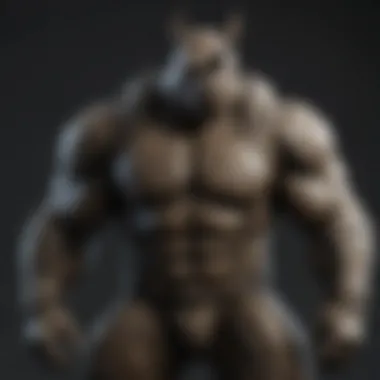
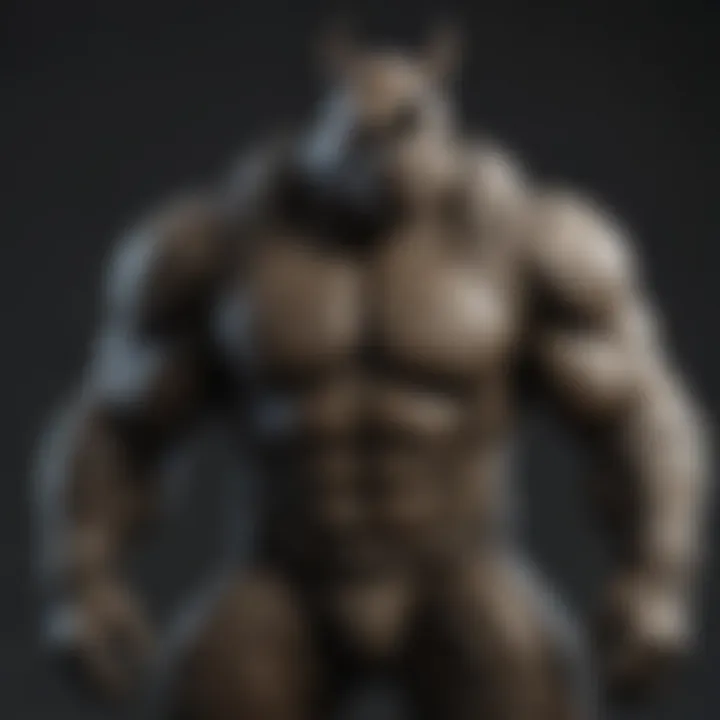
The collectibility of Rhino figures is a key aspect to understand for fans and collectors alike. These action figures represent not just a character but also the evolving narrative and status within the broader Marvel universe. Collectibility often hinges on various elements, including rarity, historical significance, and the overall demand within the collector community. This section delves into market trends, valuation, rarity, and demand, highlighting why Rhino figures stand out.
Market Trends and Valuation
Market trends for action figures, including those of Rhino, fluctuate based on several factors. The value of a Rhino figure can be influenced by its condition, packaging, and whether it is part of a limited series. Recently, there has been a resurgence in interest in vintage Marvel Legends figures. Collectors often seek figures from earlier releases, especially those still in original packaging. The appeal of nostalgia drives prices upwards.
Factors contributing to valuation include:
- Condition: Mint-condition figures are always more sought after.
- Complete Packaging: Figures with intact original boxes attract higher bids.
- Limited Editions: Exclusive figures, especially those from conventions or special collections, often see spikes in value.
In summary, knowing the current market trends can help collectors make informed decisions about their purchases and sales of Rhino figures.
Rarity and Demand
Rarity plays a crucial role in determining the value of Rhino figures. Some figures were released in limited quantities, making them highly sought after. For example, special editions or figures released during significant Marvel milestones tend to become rare quickly. When such figures become available, demand can grow exponentially.
Collectors often focus on:
- Limited runs by brands: Figures released in small numbers tend to hold value.
- Discontinued lines: Anything that is no longer produced often becomes a collector's item.
- Popularity of the character: As Rhino continues to evolve in various media, interest in figures can soar.
This dynamic between rarity and demand leads to a vibrant secondary market. Prices can fluctuate significantly based on the factors discussed above, impacting collectors' strategies and contributing to the richness of the collecting experience.
"Understanding the factors that drive collectibility helps collectors build valuable collections."
By focusing on both market trends and the rarity of Rhino figures, collectors can more accurately assess their investments, ultimately enriching their experience within the Marvel fandom.
Fan Community and Culture
The fan community surrounding Marvel Legends Rhino illustrates the broader impact of character engagement and merchandise on existing fandoms. Rhino, as a member of Spider-Man’s rogues' gallery, attracts a diverse community that appreciates both the character's depth and the collectible market surrounding him. Such communities breathe enthusiasm into collecting, cosplay, and discussions about comic lore.
One notable aspect of this culture is the enthusiasm for fan demos and gatherings, where collectors and enthusiasts share experiences and showcase their collectibles. These events often serve as platforms for fans to connect, fostering a sense of belonging in a shared interest.
Beyond local meet-ups, fan culture thrives on various online platforms. Websites like Reddit and dedicated Facebook groups allow fans to discuss about character interpretations and share their thoughts on new figure releases. Access to global networks enriches the experience and caters to those unable to attend physical events.
Additionally, the shared experience among fans creates a sense of investment in the character's future in various media. Understanding changes in Rhino's representation and the evolution of his figures sparks lively discussions, which often lead to theories and hope for future adaptations.
Overall, this fan community not only celebrates Rhino but enhances the understanding of his significance in the Marvel universe. An engaged and passionate community fosters a deeper relationship between the character and the audience, encouraging ongoing conversations about past and future narratives.
Fan Demos and Gatherings
Fan demos and gatherings are crucial in strengthening bonds within the community. These events often focus on showcasing collectibles, giving fans a chance to exhibit their passion for Rhino and related memorabilia. Participants engage in activities such as figure displaying, trading, and sometimes workshop sessions on display techniques.
Attendees benefit through a multi-faceted experience:
- Networking: Meeting like-minded individuals helps expand connection points between fans.
- Learning: Knowledge-sharing involves discussions about figure customization, which can elevate the collecting experience.
- Appreciation: Gathering allows fans to express their enthusiasm for the character with others who understand their passion.
These gatherings not only create excitement but also guide future trends in collecting.
Impact on Fandom
The impact of the Rhino character on fandom is far-reaching. His portrayal across multiple media has given rise to devoted fan interpretations and creative expressions, including fan art, fan fiction, and discussions about his role within the Spider-Man universe. This phenomenon highlights how character depth transcends mere collecting.
The conversations and content generated by fans often influence how figures are received in the market. For instance, vocal fanbases can lead to requests for specific figure variants or improved articulation in future releases. Additionally, this dialogue helps companies understand the preferences and expectations of their audience, potentially guiding design choices in upcoming products.
Rhino’s significance resonates in community mindsets, whereby the ongoing evolution of his character reflects the broader trends of storytelling within comics. Enthusiasts often speculate on potential appearances in future films or series, creating dialogues that keep his character relevant. This ongoing engagement promotes a culture that appreciates not just the merchandise but the underlying stories that characterize the Marvel Universe
Closure
The exploration of Rhino in the context of the Marvel Legends series provides significant insights into not just the character but also the larger implications of his role within the Spider-Man universe. Rhino serves as a potent symbol of brute force and conflict, embodying the classic antagonist's qualities. His journey reflects the complexities of villainy, illustrating that while he is often seen as a simple brute, there are layers to his character worthy of examination and appreciation.
Summative Insights
In summary, the depth of Rhino's character and his various portrayals across media emphasizes the importance of character development in comics. Rhino has evolved from a basic villain to a figure who often garners empathy and depth. This transformation mirrors broader trends in superhero narratives, where villains are not merely adversaries but complex individuals with backgrounds and motivations. Such an understanding enhances the fan experience, fostering a richer connection to the material. The Marvel Legends action figures capture this complexity through meticulous design and articulation, allowing fans to celebrate not just the character but the narrative evolution he represents.
Future of Rhino in Media
Looking ahead, the future of Rhino in media remains full of potential. As filmmakers and writers continue to explore antiheroes and morally ambiguous characters, there may be renewed interest in Rhino as a character who can straddle the line between villain and antihero. The possibilities for storytelling are vast. With a focus on developing characters with depth, Rhino could potentially find himself in roles that present moral dilemmas, challenging traditional notions of good versus evil.
Moreover, continued releases in the Marvel Legends series will likely keep Rhino relevant within the collector community. As new iterations of the character are developed, fans can expect to see inventive designs that showcase his evolution while maintaining fidelity to the original character's essence. This attention to detail not only sustains interest in the character but also contributes to the ongoing dialogue within the fandom about the legacy of comic book characters in contemporary culture.
"Rhino is more than just a character; he is a reflection of the shifting dynamics in comic lore and an example of how villains can evolve beyond their traditional roles."







